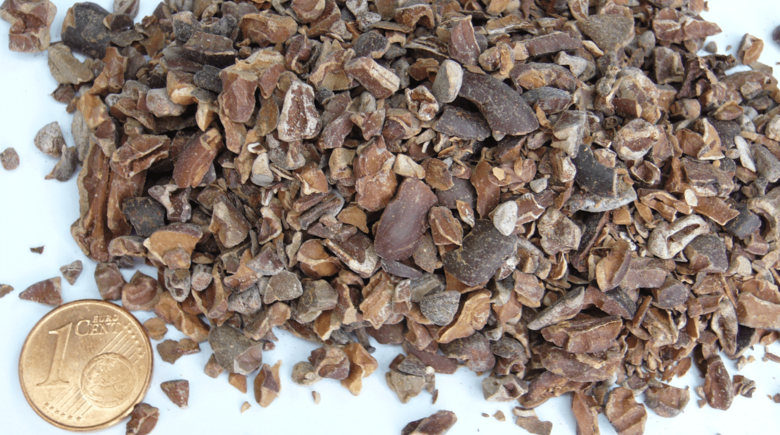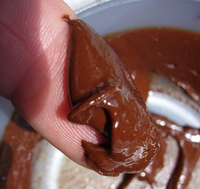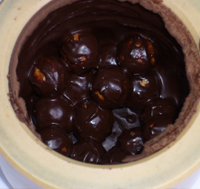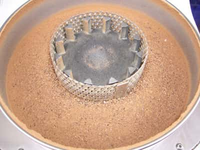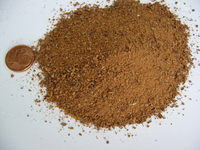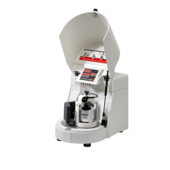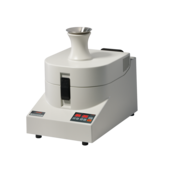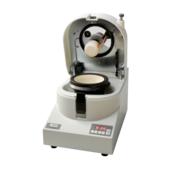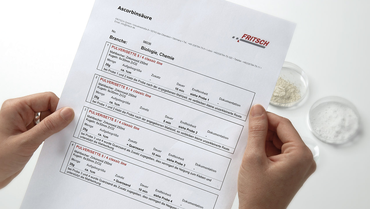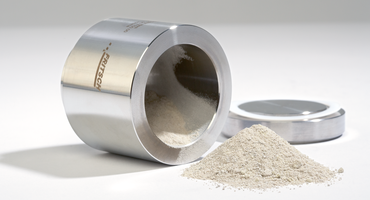返回概览
Processing cocoa beans in the laboratory
Cocoa beans are the seeds of the cocoa tree. The main growing areas are:
- Indonesia
- West Africa
- South America
The cocoa beans are exported world wide. The most important products which we as consumers come in contact with are cocoa beverages and chocolate. The most important characteristic trait for us is the taste. But before they become chocolate, the cocoa beans have to be roasted, peeled and cracked open. Hereby the broken pieces of the cocoa cores evolve, the so called nibs. These nibs are then ground to a semi-fluid cocoa mass. For the production of cocoa powder the mass is pressed and the pressed patty ground. The accrued cocoa butter is processed along with the cocoa mass into chocolate.
The comminution of the nibs was already replicated several times in the laboratory. For this, up until now the Mortar Grinder PULVERISETTE 2 and the Planetary Mono Mill PULVERISETTE 6 classic line utilized. Hereby, the in the cells embedded fat, the cocoa butter, discharges and joins the broken pieces, depending on the temperature and application of energy to a dark brown mass.
Proven for sensory testing’s is the comminution with a Mortar Grinder
For the production of chocolate mostly industrial roller plants are utilized. The Mortar Grinder PULVERISETTE 2 passes the energy with pressure and friction to the material to be milled. The applied energy per time unit is much less as than with a planetary ball mill, which is optimized to the maximum impact energy. Therefore the mortar mill does not correspond any longer with the large scale technical process.
Aspects of the sensory testing
The sample remains in the mortar grinder with surrounding temperature. The fat is only partially squeezed from the grain and a clod shaped mass evolves. For sensory tests, the shape of the mechanical strains and also the consistency of the sample have to be imitated.
Here you must work with higher temperatures. For this we would recommend a zirconium oxide mortar bowl and pestle. The mortar bowl and also the pestle are to be warmed inside the heating cabinet to 50 °C. The retained energy is sufficient to produce in the 10 minute process period a homogenous mass capable of flowing. Then distinguished palates decide in regards to the quality of the supplied cocoa beans the further use.
Is the task to examine the sample in regards to
- Pesticides from cultivation
- Mycotoxins from the first steps of production or the improper transport, respectively storage
- Heavy metals
then the Planetary Ball Mill PULVERISETTE 6 classic line is the solution. With this instrument, in an extremely short amount of time, an absolute homogenous mass can be obtained. In the example the 250 ml zirconium oxide grinding set equipped with 20 mm balls was used. 50 g weighed-in-quantity is after 2 minutes the most beautiful chocolate. The first look inside the opened grinding set leaves nothing to be desired in regards to the fineness and homogeneity. The high application of energy does influence the sensory testing though.
Now the following task: Processing amounts of 2 kg maximum in a manner, so they could be further processed in the experimental lab into a chocolate mass
The request was to grind the nibs down to a preferably fine pourable powder. The two first mentioned mills can be eliminated based on the desired final product. Therefore the Variable Speed Rotor Mill PULVERISETTE 14 was chosen for this task. 100 g nibs were comminuted in less than a minute. Utilized was a 2 mm sieve. A glance into the open grinding chamber shows, that there is still enough room for additional material.
In order to obtain the required amount of 2 kg either you have to work batch wise or the instrument has to be equipped with the conversion-kit for the comminution of large quantities.
The obtained fineness is sufficient enough though. The material becomes even finer, when sieved through a 2 mm sieve. A comminution by using the 1 mm sieve is unsuccessful.
Tests to additionally increase the fineness by mixing with dry ice were not carried out. This would be a promising approach though to obtain an even finer, pourable powder in this manner.
-
Download the FRITSCH-report as PDF file
-
Detailed grinding reports
返回概览

